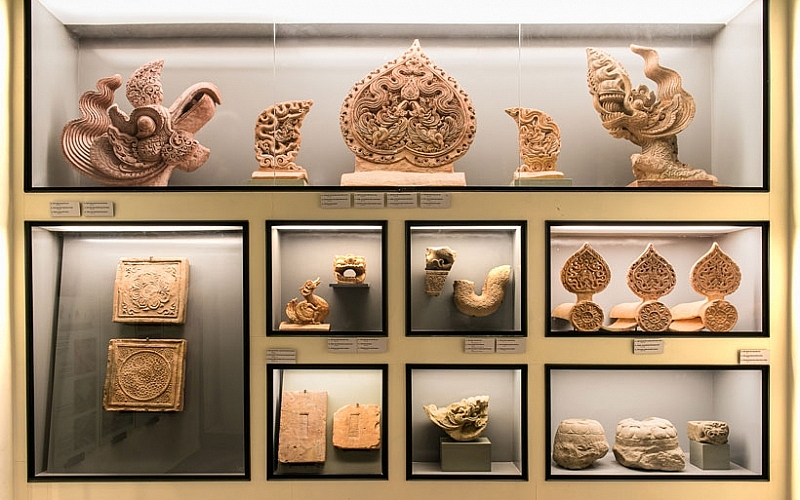Hoang Thanh Thang Long – World Cultural Heritage
13/08/2020
Hoang Thanh Thang Long is a relic complex associated with the history of Hanoi Thang Long Citadel. This architectural work was built by the dynasties in many historical periods, becoming the most important relic in the system of Vietnamese monuments. In 2010, the Thang Long Citadel of Vietnam was recognized as a World Cultural Heritage by the United Nations Educational and Scientific Organization (UNESCO). This is a milestone of special significance for the Hoang Thanh Thang Long Heritage Site in particular and for Vietnam in general.

Criteria for Cultural Heritage
To be inscribed on the Unesco World Heritage List, a property must meet the cultural or natural standards under the World Heritage Convention, which has been reviewed by the UNESCO World Heritage Committee.
A cultural relic must be authentic, have far-reaching influence or have unique evidence for the development of architectural art, or it must be associated with ideas or beliefs of popular significance, or a striking example of a traditional lifestyle representing a particular culture. There are 6 criteria given for Cultural Heritage:
(I) – Is a masterpiece of human creativity
(II) – Demonstrating an important exchange of human values, over a period of time or within a cultural region of the world, of developments in architecture or technology, visual arts, urban planning or landscape design.
(III) – A unique or unique evidence or at least a special evidence of an existing or lost cultural tradition or civilization.
(IV) – An outstanding example of a building architecture or a landscape architectural ensemble illustrating one or more significant periods in human history.
(V) – A typical example of human settlement or a traditional territorial occupation that represents one or more cultures, especially when it becomes vulnerable to the effects of fluctuations cannot be reversed.
(VI) – Associate directly or specifically with events or traditions of activities with ideas, or beliefs, literary and artistic works of international significance. (This standard is only used in special cases and applies in conjunction with other standards)
Hoang Thanh Thang Long Heritage Site is recognized by UNESCO as a Cultural Heritage in 2010
According to information from the Vietnamese delegation present at the 34th session of the World Heritage Committee (WHC – including 21 member countries) in Brazil, the Thang Long Citadel Center (Hanoi) was announced. claiming to be a world cultural heritage is not easy.
However, after a rather tense discussion, Hanoi’s thousand-year-old heritage site was recognized based on criteria No. II, III and VI among the normative criteria of UNESCO. Specifically:
Criterion No. II on the length of cultural history: The relics on the ground and excavated in the ground at the Central Citadel of Thang Long – Hanoi are a unique demonstration of the long-term cultural exchange process. , is a place receiving many cultural influences from outside, many theories and ideas of global value of human civilization, especially Buddhism, Confucianism, feng shui theory, Eastern imperialism model, Western military architecture model (Vauban citadel), from China, Champa, France, to create the unique and creative features of a political, economic and cultural center of a regional country Red River Delta. The results of such cultural interference and acculturation are expressed in landscape creation, planning of palace areas, in architectural art and the art of royal decoration with diverse cultural developments through periods of time. history.

Criterion No. III on the diverse and rich relic floors: The Central Area of Thang Long Citadel – Hanoi is the only proof of the long-standing cultural traditions of the Vietnamese people in the Red River Delta throughout the calendar. history continued for 13 centuries and still continues to this day. The cultural, archaeological, architectural and artistic relics of the heritage reflect a continuous historical chain of the dynasties that ruled the country in Vietnam in terms of ideological, political, administrative, law, economics and culture for nearly a thousand years. In the world, it is very rare to find a legacy that demonstrates such a long-term continuity of political and cultural development in the central area of Thang Long Citadel – Hanoi.

Criterion VI on continuity of assets as a center of power: The Imperial Citadel of Thang Long – Hanoi clearly demonstrates a heritage that is directly related to many important events. of the history of an ethnic Southeast Asian nation in regional and world relations. The nomination heritage is convincing evidence of the vitality and resilience of a country after more than ten centuries of foreign domination. The nomination heritage also marked the victory of a colonial country in the fight against colonialism, national independence, and had a great influence in the national liberation movement in the world.
RELATED ARTICLES
HERITAGES OF VIETNAM